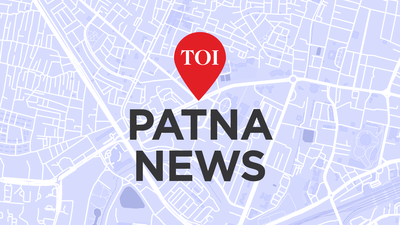In March of this year, Ukiah High School sophomore and UHS News reporter Zach Stewart submitted a story to the Times-Standard’s sister publication, the Ukiah Daily Journal . The story, entitled “Ukiah High takes action against the opioid crisis,” detailed the school’s years-long efforts to obtain and stock naloxone (often called by the brand name “Narcan”) a “life-saving drug that can reverse overdoses” from dangerous opioids like fentanyl. Ukiah High is one of many schools throughout Northern California attempting to curb the opioid crisis.
“Thirty years ago, when I was in high school, my friends that experimented (with drugs) didn’t have to worry about fentanyl-laced things,” Ukiah High Principal Dr. Analese Alvarez told Stewart. “That’s just the reality of the world we live in now — no matter how trustworthy the person who’s providing something to you, they may not know where it came from or whether it’s laced with fentanyl.

” In recent years, as efforts to combat the ongoing opioid epidemic have ramped up, so has the prevalence of naloxone. And as empirical evidence of successes in preventing overdose deaths via naloxone have become increasingly clear, so too has a jarring conclusion illustrated in Stewart’s reporting. Public schools of all types and stripes — as community hubs that service hundreds and even thousands of students, as well as other community members including parents and guardians — are sites that require naloxone and staff trained to administer the overdose-reversing drug and prevent tragedy.
This is particularly important in a community like Humboldt County, where opioid abuse is prevalent and metrics like ACE scores — which purport to measure adverse childhood experiences and outline dangers and health implications associated with those experiences — are high. And school officials say access to naloxone is crucial to keeping kids and other community members safe. Humboldt County schools School Safety Director Klark Swan works on the Humboldt County Office of Education’s Prevention and Intervention efforts.
Her work, she told the Times-Standard, touches all aspects of the county’s efforts to address and prevent drug use in schools, from early preventative efforts to emergency provisions that address some of the community’s most dire public health issues. “The county’s primary focus is on preventative opportunities for students ..
. fostering positive school environments and self-awareness and problem-solving skills that are foundational skills that will help students navigate increasingly risky environments that include drugs and alcohol,” Swan said. “And then we have some interventions and downstream work where we are helping students to navigate challenging situations like the fentanyl and opioid crisis in our community.
” When describing naloxone, Swan uses a common analogy, likening a dose of naloxone — administered via a nasal spray application — to a fire extinguisher. It’s crucial to have on hand, and the ideal situation is that it never has to be used. She also concurs with the idea that some misinformation on naloxone — blaming the life-saving drug for allowing continued opioid abuse — follows a perverse logic that would blame the prevalence of fire extinguishers for encouraging arson.
Educating educators, students and the community In her role, Swan trains staff at Humboldt County’s various districts and schools on the opioid crisis and the use of naloxone to prevent accidental overdose deaths. “My primary focus is to educate the adults that are in those spaces with the students, and then there are some peer trainers at the local level — youth educating other youth — and there are some adults that are educating youth at the junior highs and high schools about what Narcan and the opioid crisis looks like in our area,” Swan said. HCOE’s training and naloxone-related supplies are funded through the California Department of Education’s Reversing Opioid Overdose grant, Swan noted, but a supply of naloxone is actually provided to HCOE free of charge through a partnership with Humboldt County’s Department of Health and Human Services.
HCOE is currently in the process of training and providing schools throughout the county. Swan said that a “two-pronged” approach that included training faculty, staff and students is key because misinformation about naloxone abounds. “There are rumors that Narcan is enabling people to utilize opioids in a kind of ‘party’ sort of way .
.. so with the opioid education (component, our approach) really has a nice balance of explaining why Narcan is a valuable tool to have in our community, specifically,” Swan explained.
“There was this idea that people were having ‘Narcan parties’ ...
and that’s just absolutely false information. (Narcan) Immediately puts your body into a withdrawal state, and you need to be taken to the emergency room. It’s not something that regenerates you to be able to continue to utilize a drug.
” Narcan has no illicit potential for abuse, Swan said. She also said that kids of all stripes are susceptible to accidental overdose, and access to naloxone is critical in an environment where fentanyl, an inexpensive and potent drug, is being added to all kinds of drugs. Early adopters in Mendocino County Dan Dougherty, spokesperson for Ukiah Unified School District, told the Times-Standard that his district’s long-standing naloxone program is a “testament to our commitment to student and staff safety” that traces its roots back more than a half-decade.
“It started in 2018 when our Director of Students Services, Jason Iversen, learned of a program offered by the California Department of Education in collaboration with the California Department of Public Health (CDPH),” Dougherty said via email. “He was in the process of adding AED defibrillator devices at schools when he was made aware of the new naloxone program.” “At that time, naloxone was available only by prescription,” Dougherty said.
“The CDPH issued a standing order that authorized ‘non-prescribing entities in California to distribute naloxone to persons in a position to assist during an opioid-related overdose’ contingent on completing an opioid overdose prevention and treatment training program.” Iverson applied for the necessary training program and was able to secure funding and training for district volunteers. Dougherty told the Times-Standard that they were unaware of any preexisting pilot project (and to this date, one is not easily available), and so they essentially built their program from scratch following “the requirements of the CDPH and used the training material they provided to establish protocols at all schools.
” To date, Ukiah High has yet to administer naloxone, Dougherty said, but the availability of the life-saving medication is a “critical component” of Ukiah Unified School District’s safety strategy for students, staff and members of the community who may show up on campus. The school’s naloxone program is now administered by the Mendocino County Office of Education, and training is part of our required annual Keenan SafeSchools Training. “When we started the program before the pandemic, we didn’t know how important and necessary it would be just a few years later,” Iverson said.
“According to our partners in law enforcement, fentanyl can be in any illegal substance today, so having the ability to counteract it and potentially save a life is key.” Efforts to make naloxone available at the state and federal level Despite misinformation, support for Narcan/naloxone programs in public schools is broad and has been steadily growing among educators, educational institutions and policy makers for the last several years. The California School Boards Association noted that “schools can save lives by stocking and administering naloxone” in response to a January 2023 California budget proposal that allotted funding for training and supply of the life-saving medication to schools.
That February, a bill (AB 19) was introduced by Assemblymember Joe Patterson, which would require all public schools to maintain a supply of two doses of naloxone. The bill failed to pass. But by November 2023, then-U.
S. Rep. Adam Schiff (D-Glendale) had introduced House Resolution 6251, a bill designed to provide grant funding “to provide schools with opioid overdose reversal drugs” (that bill, though, has been held up in committee for two years, and Schiff has subsequently moved to a new role in the U.
S. Senate). By September 2024, the National Association of School Nurses released a position statement affirming that “all students, as well as any person on school grounds, should have equitable access to safe and effective emergency overdose-reversal medication and care if an opioid overdose occurs in the school setting.
” There are current provisions for supplying naloxone to schools in Gov. Gavin Newsom’s budget, but there are worries that budget cuts may imperil access to naloxone in the community. “Just in this last year, where we’ve been able to get (naloxone) into our schools, and there’s been more peer education, and there’s been things like opioid conferences in our community, there’s been a huge decrease in accidental overdoses in our community,” Swan said.
“That is because we’re able to educate people about the crisis along with (providing access to) Narcan” in our community, Swan added. HCOE is training staff at nearly a dozen schools, Swan said. “It’s important to remember that we’re not promoting drug usage .
.. We’re providing students with a safety measure.
” Robert Schaulis can be reached at 707-441-0585..
Health

Naloxone programs at Humboldt County schools ensure community safety

“The county’s primary focus is on preventative opportunities for students ... fostering positive school environments and self-awareness and problem solving skills that are foundational skills that will help students navigate increasingly risky environments that include drugs and alcohol,” HCOE Safety Director Klark Swan said. “And then we have some interventions and downstream work where we are helping students to navigate challenging situations like the fentanyl and opioid crisis in our community.”















